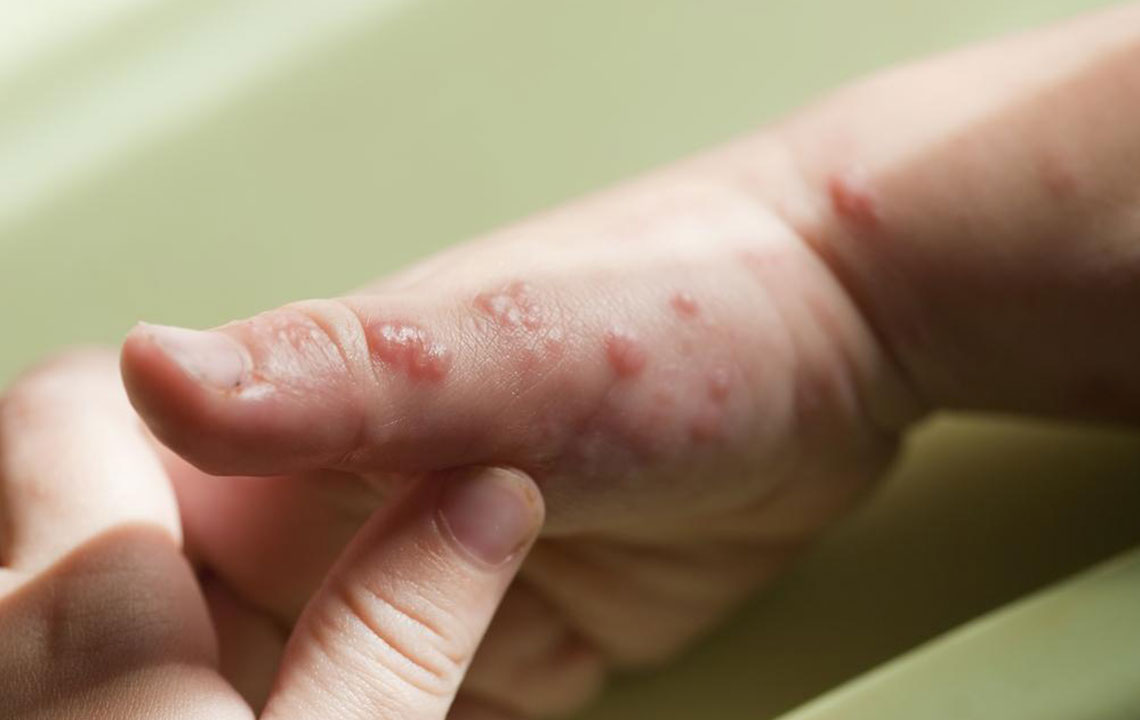The Top Symptoms Of Shingles You Should Watch Out For
Shingles are caused by the varicella-zoster virus. Medically referred to as herpes zoster, there is every chance that a person who had chickenpox will suffer from shingles during their lifetime. The chickenpox virus causes shingles when reactivated.
Usually, it’s older adults (over 60 years) who are most likely to suffer from shingles. Other categories of people who are at risk from shingles include those undergoing cancer treatment, people with HIV, people under a lot of stress, and organ transplant patients.

The symptoms of shingles appear as a rash on a localized part of the body, usually in the abdominal area. The early symptoms of shingles appear days before it can be confirmed as a shingles infection. As the infection progresses, the rash appears as a band or a half-belt, a characteristic feature of shingles. The band appears around the rib cage or waist. Also referred to as the shingles band or shingles girdle, it can cover a wide area on one side of the midsection.
How do you identify if it’s a simple rash or shingles? While ordinary rashes are painless and itchy, shingles is painful.
Symptoms of shingles
The symptoms associated with shingles develop in stages.
- Prodromal stage: The earliest symptoms occur on one part of the body or on the face. Pain, burning, itching, and numbness occurs in the area around the affected nerves days before the rash makes an appearance. The pain is a sharp, intense and stabbing one. The patient suffers discomfort in the chest or back. It can also occur in the abdomen, neck, face, head, arm, or leg as well. Lymph nodes get swollen and the person experiences tenderness. Flu-like symptoms such as chills, stomach ache, or diarrhea occur, just as the rash becomes evident.
- Active stage : This is when the rash and blisters begin to appear. Pink or red blotchy patches appear on one side of the body. These rashes tend to cluster along the nerve pathway; this why there is shooting pain. The rash appears as a band or a strip. Blisters form, containing a clear fluid, which becomes cloudy after 3 or 4 days. In addition to the rash in the abdominal region, some patients develop a rash on the cheek, nose, forehead, and one eye.
- Ophthalmic shingles: If shingles symptoms affect the eye, immediate medical intervention is required; shingles can threaten your eyesight. Ophthalmic shingles affect the nerves around the eye, which control movement and facial sensation. The rash appears around the eye and over the forehead and nose. Commonly associated symptoms include headaches, redness, and swelling of the eye, inflammation of the cornea/iris, drooping eyelid, and blurred/double vision. After about 5 days, the fluid-filled blisters break open, ooze out, and crust over. While shingles is not contagious, if you come into contact with the fluid oozing out from the blister, you’re at risk of catching the chickenpox infection. It is worth noting here that the same virus causes both shingles and chickenpox. Once the blisters scab and crust, the pain eases and the risk of the virus spreading is reduced. It takes about 2 to 4 weeks for the rash to heal completely. There is a chance that scars may be left behind.
- Postherpetic Neuralgia: This is the chronic pain stage and shows up as one of the most common complications of shingles. Lasting for at least 30 days, it can even stretch up to months and years. The symptoms include aches, burning and stabbing pain where the shingles rash appeared earlier, hypersensitivity to touch, and persistent pain that can last for years. Postherpetic neuralgia pain usually affects the forehead and chest. The pain is severe to the extent of causing difficulty in eating, sleeping, and performing daily activities. The continued suffering can lead to depression as well.
Extent of spread of shingles
Normally, shingles rash appears over a localized area. But in some cases, the shingles rash spread across multiple dermatomes. Dermatomes are separate skin areas that are supplied by distinct spinal nerves. When the rash is spread over three or more dermatomes, it is referred to as disseminated or widespread zoster. Being spread over a larger area, the rash looks more like chicken pox.
Treatment options
Early diagnosis can reduce the severity of the symptoms of shingles. Antiviral drugs are administered to ease the symptoms and also to reduce the duration of the infection. To reduce the discomfort due to itching, calamine lotion, wet compress, and colloidal oatmeal baths are of great help. Painkillers offer relief from pain during the active and chronic pain stage. Varicella vaccine taken as part of childhood immunization helps to reduce the risk of developing shingles in later life.




